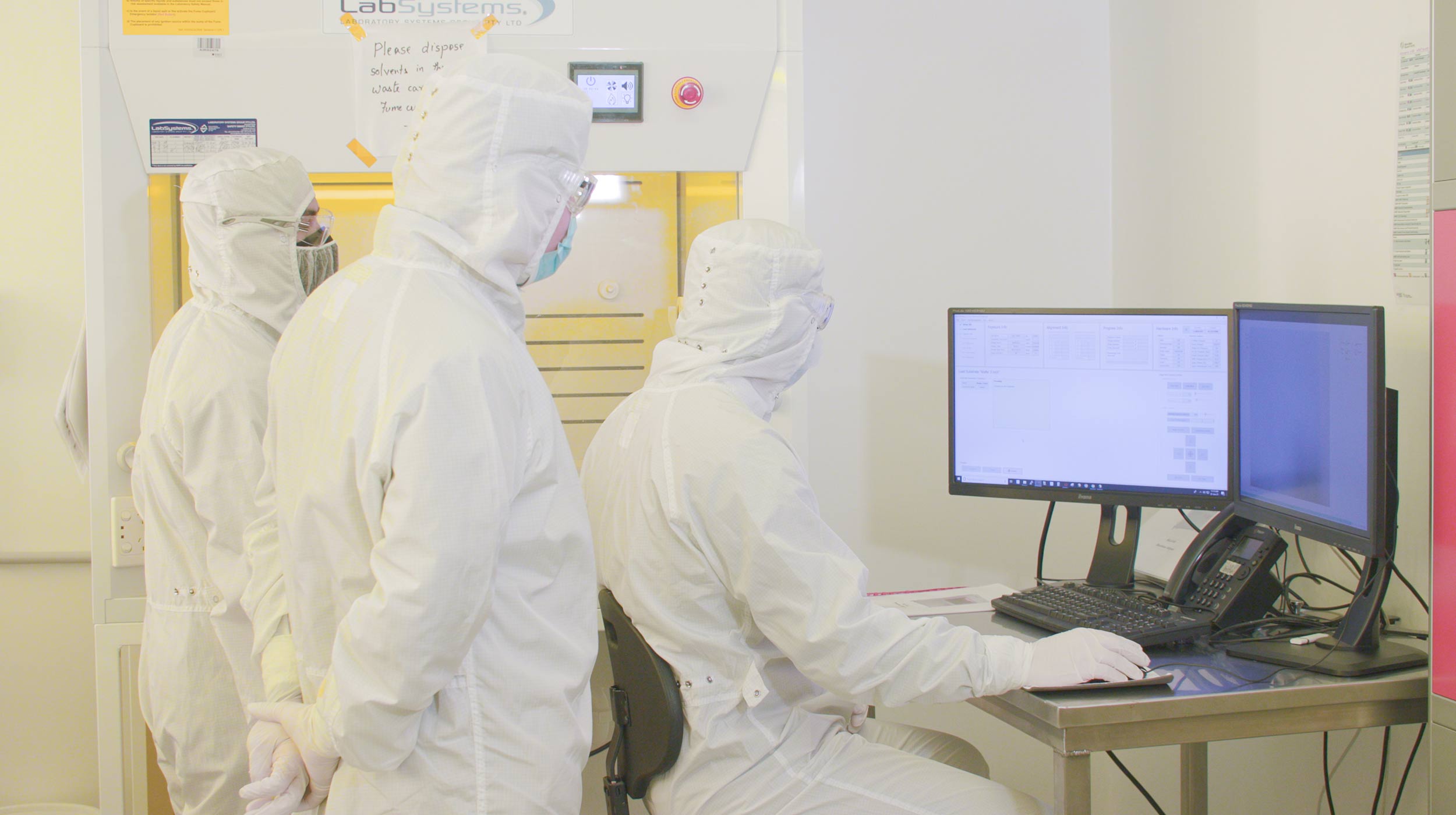
From smart TV’s and the internet to the LEDs that light our homes, many industries are powered by photonics that make it a booming industry. In Australia alone, the photonics industry contributes $4.3 billion to the economy and employs more than 9,500 people in high-tech, high-productivity jobs.
With an industry growing so rapidly, we currently do not have enough photonic chip design, simulation and fabrication graduates to keep up with the rate at which industry is requesting them.

We collaborated with Professor Wim Bogaerts at Ghent University to help specialist silicon photonics design students learn skills in translating a photonic circuit idea into a working chip.
To reduce the chip turnaround time for students – which often took up to six months – we adapted the software we use at InPAC and made it compatible with the software used at Ghent University (powered by Luceda Photonics).
We created a library of components compatible with our manufacturing process at InPAC. Then, with each verified ‘lego block’, the students could design with these components to build their own circuits.
With our library of verified components compatible with our InPAC fabrication process, we can now offer a rapid turnaround time of six weeks for printing silicon photonic chips.
This rapid turnaround time means that students are now learning skills in iterative design and fabrication and end up with a thoroughly tested high-quality end-product. This means they are more likely to publish their work, making them more competitive for the job market.
Industry and academics can also take advantage of this library of certified components to design and fabricate their own chips, knowing that it will be fully compatible with mass manufacturing processes.
Read more on the Key research areas page about how to work with us.
Photonics is a booming industry and we are constantly in need of new photonics graduates with hands-on experience – we are very pleased with the quality of graduates from InPAC so far.
Robert Scholten
Co-Founder MOGLabs
Weeks 1 & 2
Get contact with us for the quick prototype fabrication service for us to learn about your needs.
Discuss your requirements and we will supply different solutions.
Week 3
Sign contract and NDA
Week 4
Prepare the design based on InPAC's rules and process design kit
Week 5
Validate the designed layout
Week 6-10
Begin fabrication
Week 11
We will measure the performance of the chip (optional)
Week 12
Show you the first iteration of the prototype
Rework based on feedback, or send the fabricated chips to customers
Read more on the Key research areas page about how to work with us.


RMIT University acknowledges the people of the Woi wurrung and Boon wurrung language groups of the eastern Kulin Nation on whose unceded lands we conduct the business of the University. RMIT University respectfully acknowledges their Ancestors and Elders, past and present. RMIT also acknowledges the Traditional Custodians and their Ancestors of the lands and waters across Australia where we conduct our business - Artwork 'Sentient' by Hollie Johnson, Gunaikurnai and Monero Ngarigo.
Learn more about our commitment to Indigenous cultures